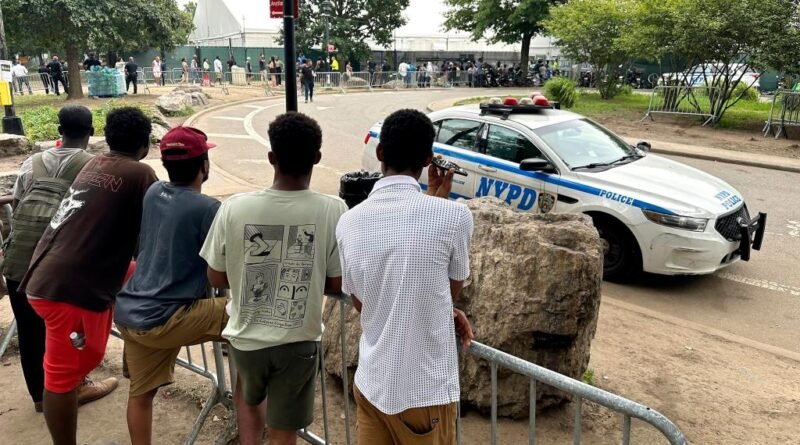The true migrant crime rate in NYC remains unknown

Last Monday, a tragic incident occurred at the Randall’s Island migrant shelter, where Venezuelan migrant Sandra Serrano lost her life in a crossfire believed to be a retaliatory shooting related to a robbery.
This marked the second murder at the shelter and one of at least eight migrant-related killings so far this year.
To prevent such incidents from shaping public perception of migrant crime, City Hall under Mayor Adams must present concrete data.
Serrano’s tragic death was part of a string of four migrant-involved murders in July alone.
In mid-July, two men residing in a migrant shelter in Brooklyn were fatally shot outside, likely targeted in a Venezuelan gang-related incident.
On the same night, another Venezuelan migrant met a violent end in a nearby park, killed by a park worker after a dispute, shedding light on the vulnerability migrants face.
June saw a migrant-related double homicide in the Bronx, and in January, another fatal stabbing occurred on Randall’s Island involving migrants.
Non-fatal crimes include a June rape, a June shooting incident involving police officers, a February tourist shooting during a shoplifting attempt in Times Square, as well as multiple armed robberies and thefts that often go unreported.
However, without concrete data, it is impossible to determine whether migrant crime rates in New York City are higher or lower than the city’s overall average.
While Mayor Adams expresses concerns about the dangers posed by migrant gang members, the NYPD does not differentiate crime data based on immigration status.
The absence of data leads to speculation and progressive arguments dismissing concerns about migrant contributions to crime rates.
Historically, immigrant crime rates have been lower than the national average, with crime decreasing during periods of increased immigration in New York City.
However, the current wave of migration under the Biden administration presents new challenges.
With a significant number of arrivals in recent years, migrants are competing for limited job opportunities, potentially leading to lower wages in the city’s underground economy.
The environment of public disorder post-2020 in New York City has created lawlessness, attracting criminal elements like the Tren de Aragua gang from Venezuela, suspected of involvement in recent crimes.
While crime statistics show a slight decrease in felony and petit larceny crimes compared to last year, they remain significantly higher than in 2019.
Murder rates, in particular, remain elevated in the city despite a national trend of falling numbers.
The combination of lenient enforcement of laws and ideological constraints from state reform contributes to the challenge of addressing crime realities, including potential migrant involvement.
Data transparency is crucial in understanding the role migrants play in crime rates, and the city could provide valuable information without compromising individuals’ privacy.
The lack of data leads to misinformation and hinders evidence-based policymaking to address crime issues effectively.
It is essential to base policies on facts and data rather than preconceived notions, regardless of whether they support or challenge migrant narratives.
Nicole Gelinas is a senior fellow at the Manhattan Institute. Updated and adapted from City Journal.



